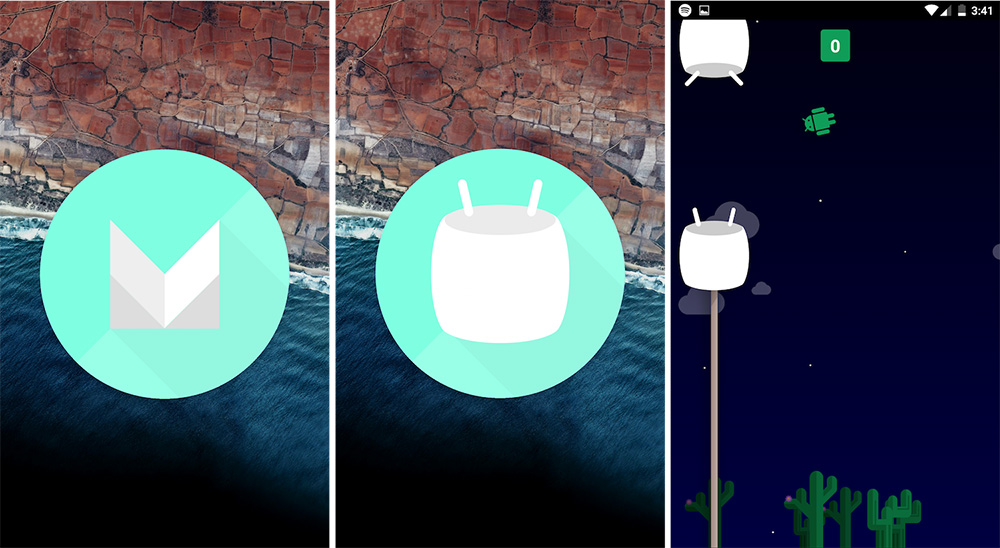Whenever I get on a new operating system. I get just as excited about the small things, minor tweaks, or significant talking points. And Android Marshmallow doesn’t disappoint, though it looks like Lollipop on the surface. It comes packed with all sorts of refinements and additions that promise to make your Android experience much more enjoyable. Here are 27 to check out. We have considered the changes and new features from the previous Developer Preview 2.
Bolder lock screen text
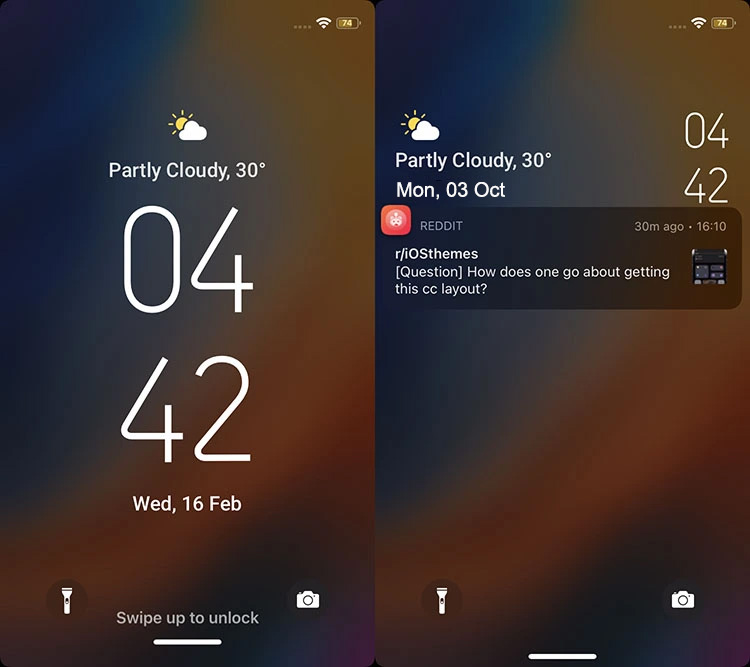
The lock screen received a slight refresh in Android Marshmallow. The text used for the clock is bolder than it was with Android Lollipop. It’s a minor change, but you may find the heavier text easier to read at a glance. Also, when you power up your phone, be sure to take a look at the fabulous new boot animation! Turn off your phone and turn it back on if you missed it!
It’s Android 6.0
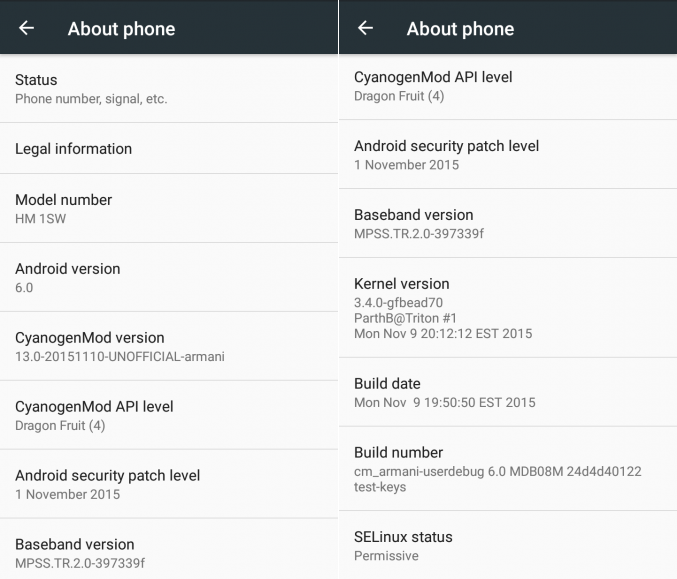
In case you missed it, Android Marshmallow is officially Android 6.0. Go to Settings > About phone and see for yourself.
Android Marshmallow Easter Egg
Google typically buries an Easter Egg deep in its Android releases. For example, Lollipop comes with a hidden Flappy Bird clone. The Flappy Droid game lives on Android 6.0 but with a new Marshmallow theme.
Go to Settings > About phone, then tap the Android version repeatedly until a stylized M icon appears onscreen. Tap it again, and a marshmallow with Android antennae appears in place of the Marshmallow. Next, tap and hold the icon for a second or two. Then repeat this process until the Flappy Android game opens. Press the Play button to start a game. When you’re done, press the Home button to return to the home screen.
Google’s New Logo Makes its Android Debut
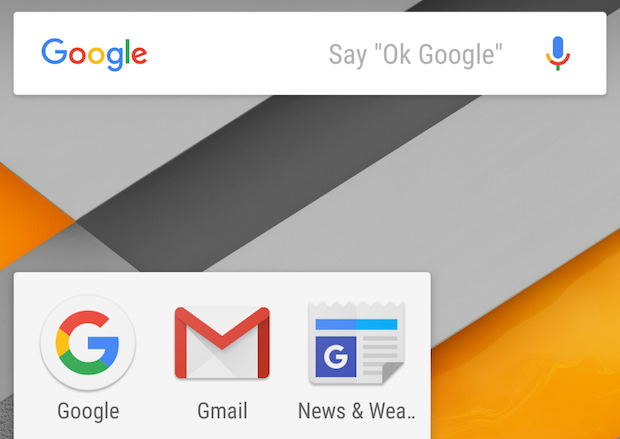
Google’s retooled logo appears all throughout Android Marshmallow. For example, you’ll spot it on the boot screen, search box, and various icons for supplied apps. The old logo isn’t completely dead yet, as it appears in a few spots in Marshmallow.
New lock screen notification panel behavior
The notification panel on the lock screen was a little wonky with Android Lollipop, as Android Intelligence’s noted. It showed you what you were already looking at on the lock screen. Android Marshmallow improves things somewhat. Instead of merely showing another instance of your notifications, it’ll open the quick settings panel. Your reports will slide down and appear below the quick settings panel.
Now Voice Search from the Lock Screen
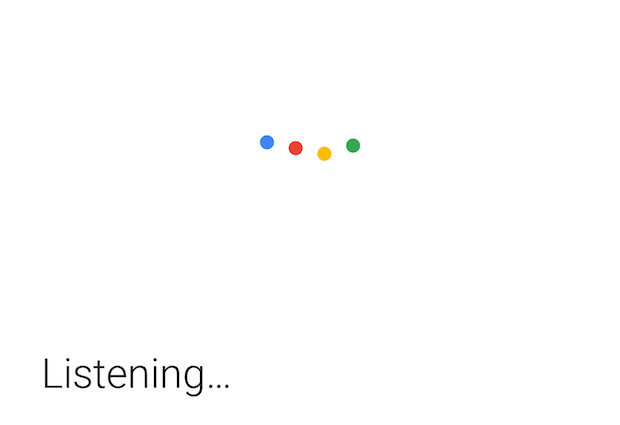
Google apparently realized that people don’t make phone calls as much as they used to. The dialer shortcut on the lock screen has been replaced with a shortcut to Now’s voice search functionality. Swipe from the lower left corner to start a voice search.
Redesigned App Drawer
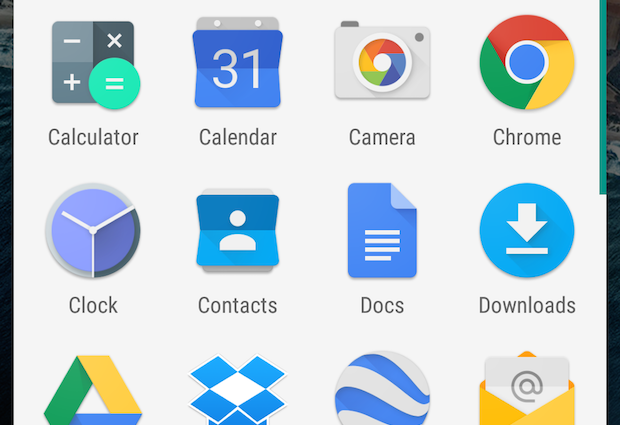
The app drawer gets an overhaul in Android Marshmallow. First off, it’s now a scrollable panel rather than a series of pages. Apps are listed in alphabetical order. If you drag the scroll thumb along the right edge. You’ll get a pop-up letter showing where you are in the alphabet. These changes may be jarring for long-time Android users, but they’ll make finding apps much easier for everyone else.
Quick Access to Frequently Used Apps
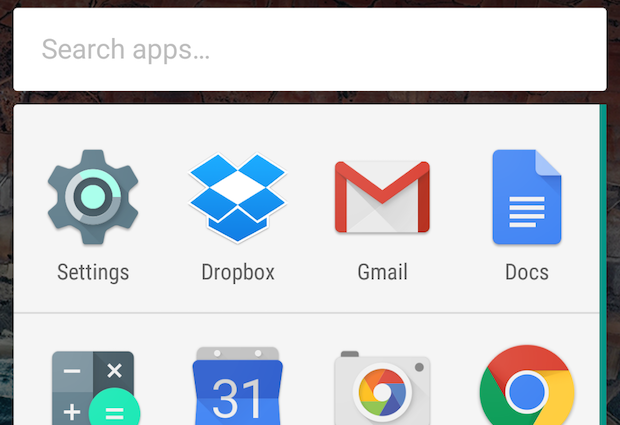
The app drawer has another pair of tools designed to make finding apps more accessible. The first is a quick-access bar that shows the four most frequently used apps. This panel also appears when you use the search box on the home screen or the Now screen.
App Drawer Search Box
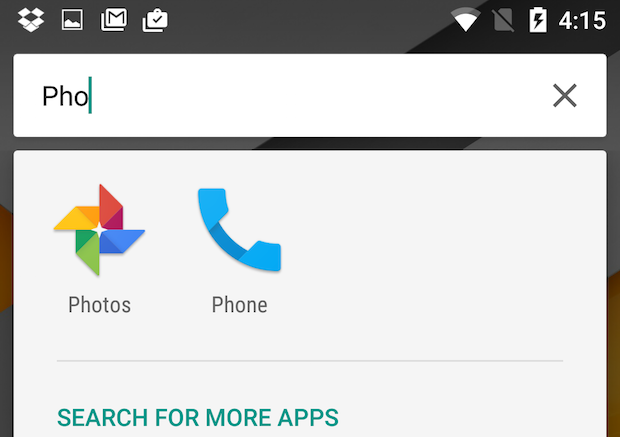
Also new is a search box in the app drawer. So you can quickly and easily go to the app you want. To use without having to scroll through the list.
Uninstall Apps Without Leaving the Homescreen
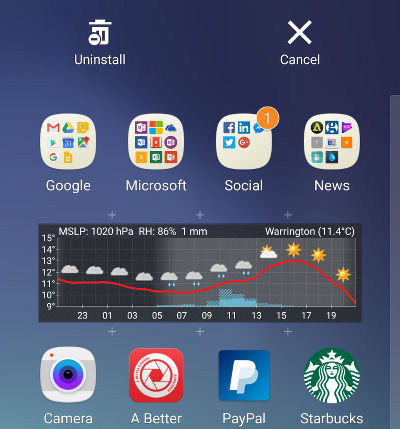
Uninstalling an app on Android Marshmallow no longer requires digging through Settings. Drag an app to the home screen, then to Uninstall. Similarly, you can view app info or remove an app from a folder. Pulling an app’s icon to the appropriate command.
New Android, New Wallpaper
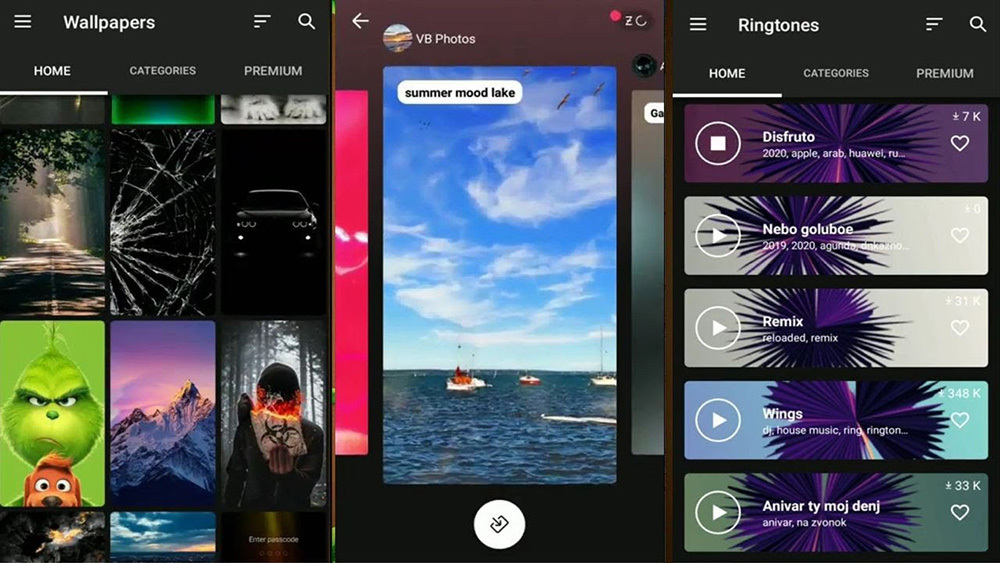
No new Android release would be complete without new wallpapers. Android Marshmallow is no exception. Visit Settings > Display > Wallpapers to check out the options.
Separate Volume Levels for Ringtones, Alarms, Media Playback
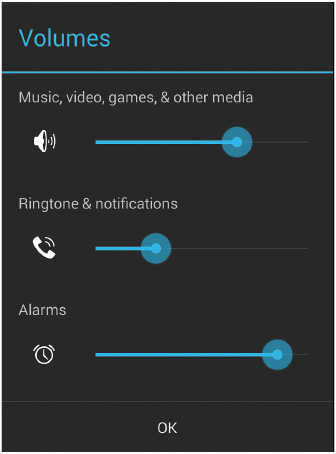
How often have you wanted to temporarily lower the ringtone notification volume but keep blaring your music at full blast? Android Marshmallow now comes with separate volume control sliders for media playback notifications. You used to have to set these individually in the Settings menu.
Retooled Share Menu
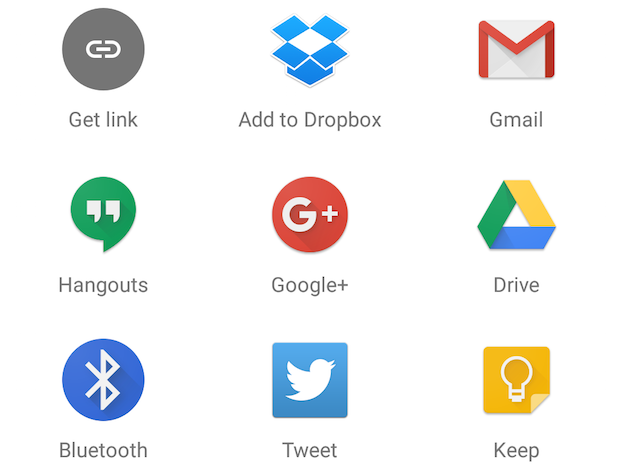
The Share menu gets a new look in Android Marshmallow. Instead of a traditional list of menu items, it now displays sharing options in a grid of icons.
The + icon, which went missing in Preview 2, is back in the public release of Android Marshmallow.
Account Settings are Now in One
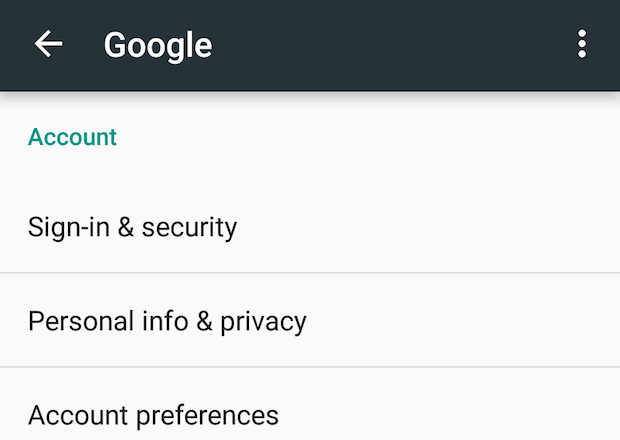
Have you ever been puzzled as to why Settings, where you go to change your preferences for various services. Lives in separate apps instead of all in one place? Like in the Settings app? Under Android Marshmallow, Settings live within the app; go to Settings >.
Dark Mode, Now You See It.
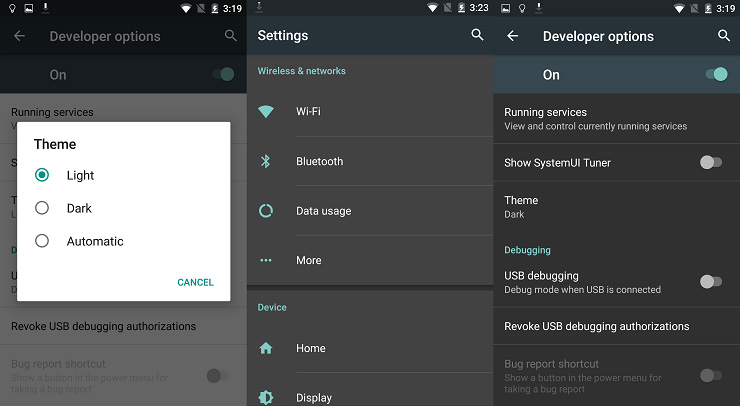
In the first Android Marshmallow developer build, a new setting is tucked away in the hidden developer options. Lets you switch from Lollipop’s generally light-colored theme to something less glaring. The dark interface theme disappeared in the second developer build, though it isn’t present in the final release. Here’s hoping we’ll see it in a future version of Android.
Meet System UI Tuner
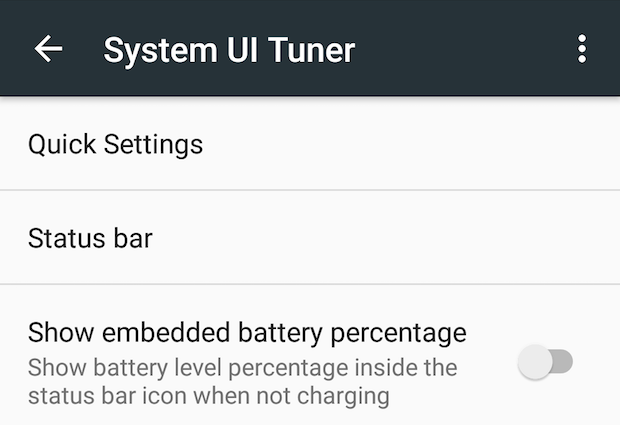
A hidden developer tool called the System UI Tuner lets you tweak various aspects of your phone’s interface. Like what appears in the quick settings drawer status bar. The demo mode may be helpful if you take screenshots for publishing online or in print. It hides extra icons in the status bar, shows a default time, and shows your battery fully charged.
To turn on System UI Tuner:
- Slide open the notification panel, then swipe down again until the Quick Settings tray slides open.
- Press and hold the gear icon until it starts spinning.
- Confirm that you want to turn on System UI Tuner, then go to Settings > System UI Tuner to see what it can do.
Customizable Quick Settings Drawer
My favorite System UI Tuner tool might be the ability to customize Android’s quick settings drawer. Tap Quick settings, and rearrange quick settings options by dragging and dropping the icons.
Wear App Battery Saver Mode
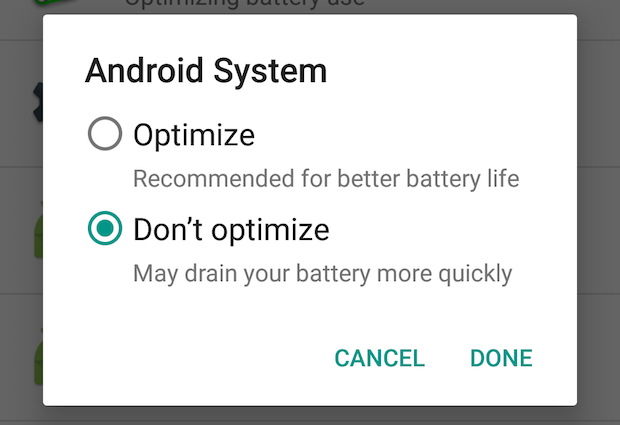
Android Lollipop has a battery-saver mode that you can switch on to save precious power when your battery gets low. Android Marshmallow builds off of Lollipop with an enhanced doze mode, which limits specific background tasks when your phone’s been inactive for some time.
If you want all background tasks to continue for a given app, you can turn doze mode off per app. Go to Settings > Battery, then the Options menu, the three dots in the upper right, and tap Battery optimization. Tap the downward-pointing arrow, then tap All apps. Click an app’s name, then tap Don’t optimize. Tap Done when you’re all set.
Turn Off Heads-Up Notifications
Suppose you dislike the heads-up notifications that slide over on-screen content in Android Lollipop. In that case, Android Marshmallow is here to rectify the situation, at least a little. To turn off heads-up notifications on a per-app basis, go to Settings > Sound & notification > App notifications. Tap an app no longer wanted in heads-up notifications, then toggle the low-peeking switch to the off position.
Do Not Disturb
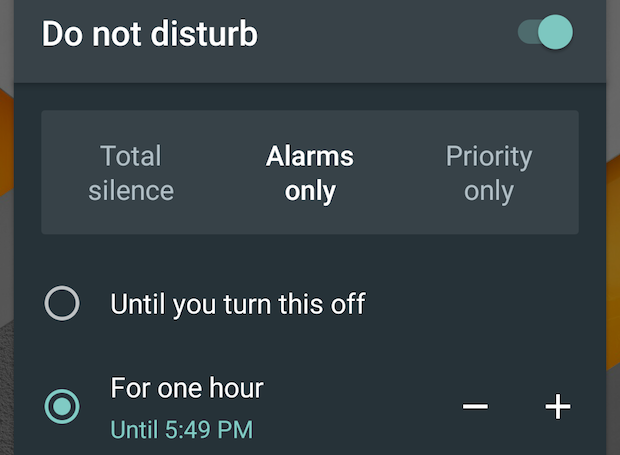
Android’s Notification Priority Downtime features for silencing notifications and getting some love in Android Marshmallow, as well as the new umbrella name, Do Not Disturb. New granularity lets you set different quiet hours for weekdays and weekends and one-time notification-free event periods. And you can even put your phone to automatically silence all notifications when you accept a calendar invitation.
The quick settings drawer’s new Do Not Disturb item has a few tricks worth checking out. With it, you can now toggle Do Not Disturb on or off, set a duration. And specify which notifications you want to see.
Use Bluetooth to Improve GPS Accuracy
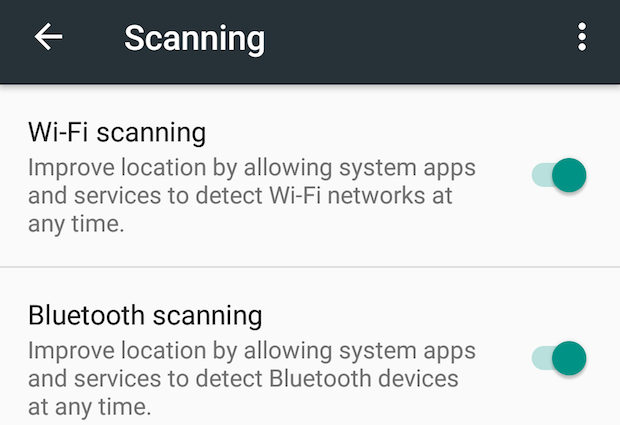
You might already know that your phone can use nearby Wi-Fi hotspots to improve its location accuracy. Still, in Android Marshmallow, you can also set Bluetooth to improve GPS accuracy. Go to Settings > Location, tap the Options menu on the three dots, and tap Scanning.
Easily Toggle App Permissions
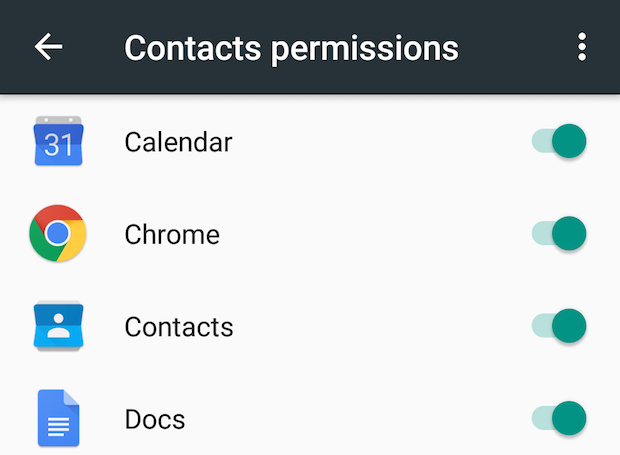
Want to see which apps have access to your camera or microphone? You can easily do that in Android Marshmallow. Go to Settings > Apps, tap the gear icon in the upper right corner, then tap App permissions. From there, you’ll be able to see which apps have access to revoke approval if you want.
By default, this view shows only apps with access to your information. To deliver hidden system services. Tap the Options button on the three dots in the upper right, then tap Show system.
New Memory Manager
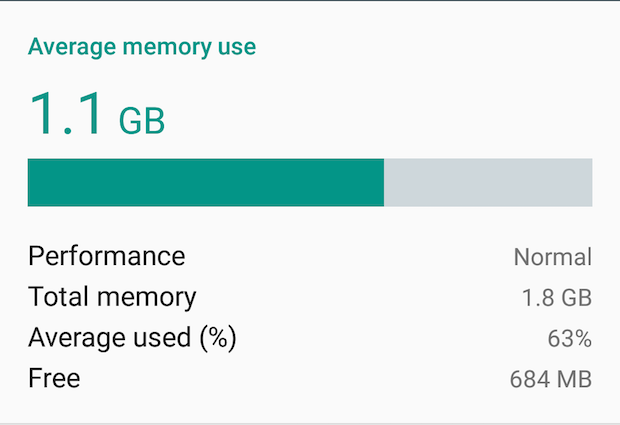
The Memory Manager screen gets a refresh in Android Marshmallow. It provides an at-a-glance view of how much memory each app uses on average and their maximum memory usage. Go to Settings > Memory to view basic stats. To see more advanced information, tap Memory used by the app. Then tap on any app to get more details on that app’s memory use.
Set New Default Apps
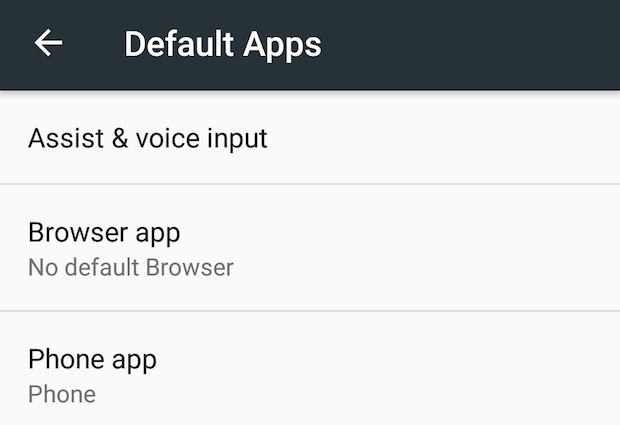
Android Marshmallow has one more change that promises to improve app management. A new, one-stop shop for setting default apps for various tasks. Using the new Default Apps settings panel, Settings > Apps, tap the gear icon, then tap Default Apps. You can change your default voice assistant app, browser, phone, and SMS app. It’d be great to see more options in the future. It’s too bad this helpful feature is buried in the Settings app.
The gear icon in the app settings houses a few other advanced features. Such as whether an app can draw over other apps. That is, whether an app can display information atop another app or whether an app can modify system settings. As Android points out, it still needs to be clarified why these features are here, so we’ll have to wait to see.
New Text Selection Editing Interface
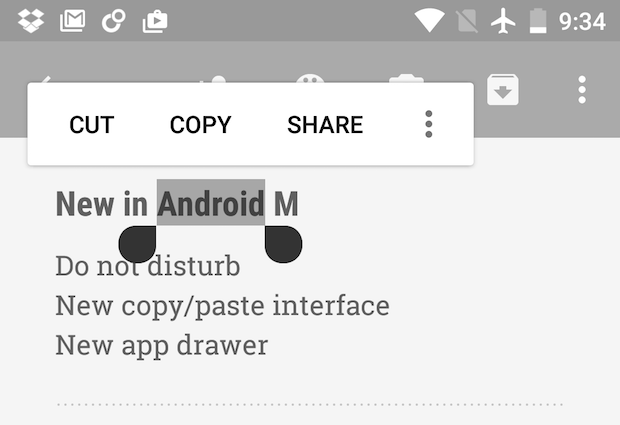
At I/O 2015, Google showed a new interface for handling text in Android Marshmallow. This new interface was missing in the first developer preview but is present in the second preview build.
Instead of the toolbar at the top of the screen, as in a prior version of Android. Text editing commands appear in a floating toolbar directly above the selected text. Tap the Options button, the three dots, to view more commands.
Instantly Delete or Share Screenshots
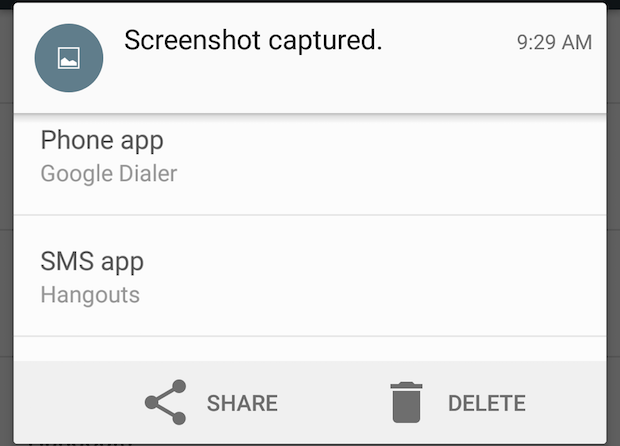
Have you ever snapped a screenshot only to realize that maybe you didn’t need it? Android Marshmallow lets you delete it right away. Just pull down the notification panel, look for the screenshot-captured notification, then tap Delete. Tapping Share brings up a share sheet. So you can quickly email the screenshot to someone or upload it to your Dropbox account.
Google Wallet is Out and Android Pay is In
The rebranded Wallet as Android Pay. While keeping the Wallet brand around as an app that makes it easy to send money to friends. Confused yet? If you used the old Wallet app to pay at stores, you’d want to use Android Pay with Android Marshmallow.


















